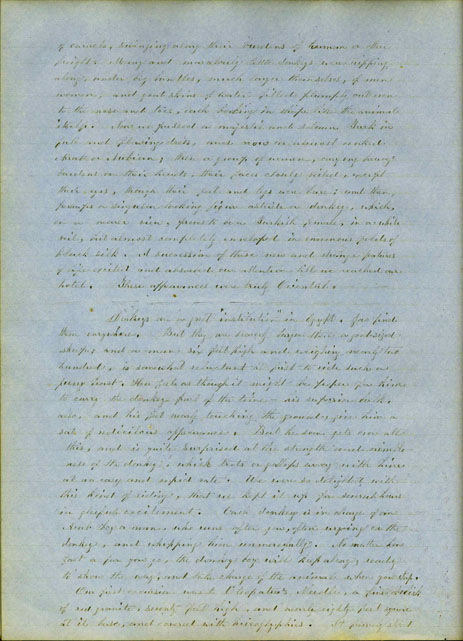Travel
Diary of Mrs. R.P. Eaton:
Europe,
Egypt, and Palestine, ca. 1857

Donkeys are a great “institution” in Egypt. Few find them anywhere. But they are surely larger than a good-sized sheep; and a man six feet high and weighing nearly two hundred, is somewhat reluctant at first to ride such a puny beats. He feels as though it might be proper for him to carry the donkey most of the time – his superior bulk, also, and his feet nearly touching the ground give him a sort of ridiculous appearance. But he soon gets over all this, and is quite surprised at the strength and nimbleness of the donkey, which trots or gallops away with him at an easy and sapid rate. We were so delighted with this kind of riding, that we kept it up for several hours in gleeful excitement. Each donkey is in charge of an Arab boy or man, who runs after yow, often urging on the donkey, and whipping him unmercifully. No matter how fast a far yow go, the donkey boy will keep along, ready to show the way, and take charge of the animal when you stop. Our first excursion was to Cleopatra’s Needle, a fine obelisk of red granite, seventy-feet high, and nearly eighty-feet square at its base, and covered with hieroglyphics. It firmly stood